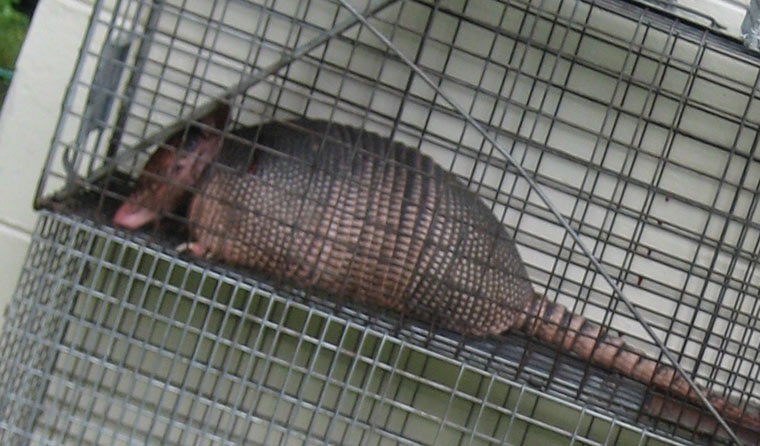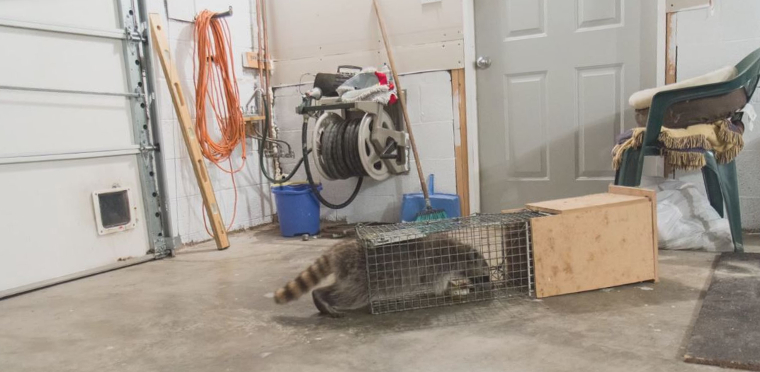-
info@aaanimalcontrol.com
Call us for help in your town
Humane Wildlife Education
What is the best wild animal bait trap?
Need wildlife removal in your hometown? We service over 500 USA locations! Click here to hire us in your town and check prices - updated for year 2020.
The bait you use should always depend on the kind of animal you’re trying to trap, but for the most part, it doesn’t really matter too much. Take the average opossum — they become roadkill trying to eat roadkill. Rats will eat feces if there is still some food left in it. Raccoons will rummage through garbage cans to eat the food you don’t think is safe to consume anymore. It’s safe to say that these creatures will eat anything, and that certainly makes baiting traps much easier.

There are a few foods that you probably won’t want to use, and these will include raw meats, and fresh food. Well, that’s unless you want to check it regularly. Although these animals could very well eat the food after it's started to go bad, the bad food itself will attract other pests. That goes against the point of getting rid of the original animal, doesn't it?
That being said, opossums tend to go after rotting meat more than other animals, hence the roadkill problem we discussed earlier. Squirrels seem to really like peanuts, nut not shelled ones -- the ones that are still left in their shells. Raccoons, on the other hand, have a much sweeter tooth. They love marshmallows, but you must remember that these can melt and make a right mess in the heat of summer.
Meat is a winner as far as trapping animals are concerned, but remember that you could attract animals you don’t want too. If you use cat food in a trap, you may also attract cats. This means the trap will not trap the animal you're trying to catch.
You'll generally fin that baiting traps is a matter of trial and error, but if the traps aren't working to catch the animal, it’s probably something else causing the problem. The bait isn't overly important. The placement, on the other hand, is. Pay more attention to where the traps are going, rather than what bait you're putting in them, and you'll have a much easier ride on your hands.
Raccoon Trapping: What Is the Best Bait?
Need raccoon removal in your hometown? We service over 500 USA locations! Click here to hire us in your town and check prices- updated for year 2020.
There are many things to take into consideration when you attempt to trap raccoons; bait is actually not the most important thing on the list. The placement of raccoon traps is important, because traps that encourage the raccoon to stray too far from a path it is already comfortable with are likely to be ineffective. Raccoons are curious, something that frequently gets them into trouble. They are not stupid, though. It would be foolish to presume they would fall for old tricks, as such.

Raccoons are known to eat many things — insects in grassy lawns, old food in ripped-apart garbage bags, pet food, chicken feed, grains, fruit and vegetables … The list could go on for some time. This means that a well-placed trap is going to be relatively effective, no matter what kind of food you put in there.
Raccoons have shown to prefer some foods over others. Marshmallows are a tasty treat for them, but in hot weather, these marshmallows could melt and create an awful, sticky mess. Sweet foods, such as candy, jams, etc., could also attract other pests, including ants and bees or wasps.
Using fresh produce isn't a good idea, especially with a short shelf life. Fresh meat, especially raw meat, will definitely attract animals to your trap, but whether it's the right animal or not is an entirely different story. You run the risk of attracting a pet cat, even your own. In fact, you run the risk of attracting other animals, especially pests, full stop. Rats, mice, opossums, coyotes, foxes, raccoons, and more are all known for their love of meat.
Bread, rice, and other grains are a good choice, but, just like meat products, you're still going to be running the risk of attracting other animals that also like grains, such as mice and rats.
When it comes to raccoon trapping, bait isn't the most important part of the job. You do need to make sure that the traps are baited at all times, and also that bad bait gets replaced as soon as possible. If you find yourself up against a trap-shy raccoon, moving the traps would be the next logical step, before changing up the bait that you're using.
For more information, you may want to click on one of these guides that I wrote:
How To Guide: Who should I hire? - What questions to ask, to look for, who NOT to hire.
How To Guide: do it yourself! - Advice on saving money by doing wildlife removal yourself.
Guide: How much does wildlife removal cost? - Analysis of wildlife control prices.
animals in the attic
noises in the attic


















